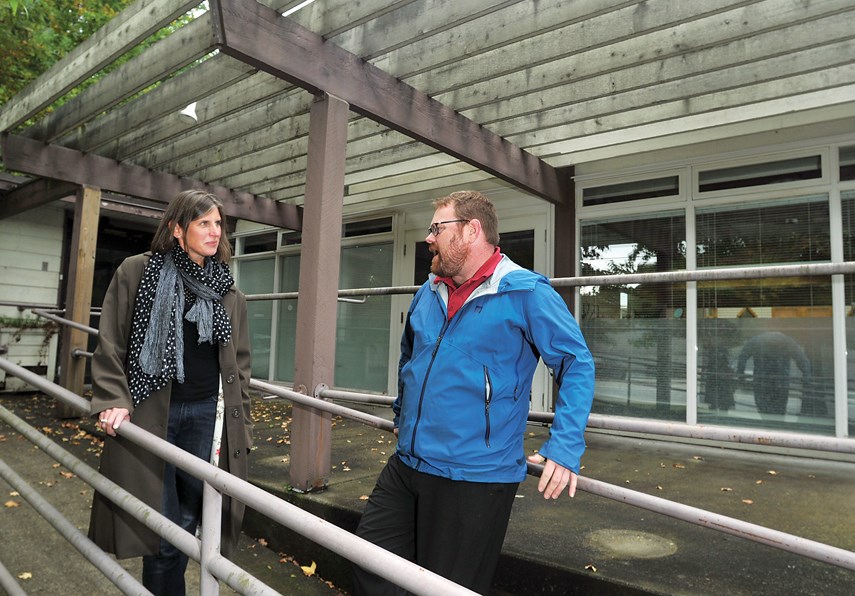Build it and they will come – to live in West Vancouver.
That’s the message from West Vancouver teachers in response to a council proposal to build 170 units of below-market rental housing for people who work in the municipality but who can’t afford to live there.
Shortly after municipal council recently voted to send concept plans for a workforce housing project off to public consultation, the West Vancouver Teachers’ Association polled their members and found overwhelming support for the idea, said president Renée Willock.
Of the 40 per cent of West Vancouver teachers who responded, more than 80 per cent said they’d be interested in “affordable workforce housing.”
That’s significant, said Willock, because the school district – along with the municipality itself – is one of the largest employers in West Vancouver.
According to a survey of West Vancouver teachers, only about 13 per cent of them live in West Vancouver, said Willock. Of those, about half are in their first five years of teaching and still living at home with family. The other half bought into the community decades ago and are nearing retirement.
A number of West Vancouver teachers also live in North Vancouver. When the North Shore as a whole is considered, about 61 per cent of West Vancouver teachers live locally, said Willock.
Willock herself, who has lived in North Vancouver for 25 years, is among them.
But many teachers living on the North Shore aren’t in housing that’s affordable or stable, she added.
Stephen Price, another member of the teachers’ association executive, currently in his third year of teaching, is among those. Price said he and his young family are fortunate to live in a West Vancouver house his grandmother bought in the 1950s. But the arrangement isn’t permanent, he says, and “It’s not my house.”
Price admits that every year he’s forced to weigh the benefits of continuing to live and work in a community his family loves and the option of applying for work in a more affordable location.
In some cases, “our younger teachers are working second jobs in order to make the rent,” said Willock.
Others face long commutes from communities like Squamish, the Sunshine Coast and even Surrey.
Willock added about 60 teachers have resigned since January in West Vancouver – a district with only 435 teachers, she added.
West Vancouver council has proposed building the workforce housing on municipal land at 2195 Gordon Ave., a 76,000 square-foot property the district bought from Vancouver Coastal Health in 2014 with proceeds from the sale of the old West Vancouver police station.
Plans also include 30 market condos to help the district recoup revenues.
The target market for the subsidized rentals would be “moderate” income households including people who work in the district as well as families with kids in the local school system.
A municipal staff report noted three-quarters of West Vancouver’s workforce currently has to commute there for work and one-third of its students come in from other districts.
Statistics for the West Vancouver Police Department point to similar challenges. Of the more than 100 officers and civilian staff who work for the municipal police force, only about half live on the North Shore. About 28 per cent live in communities at least one bridge away and more than 20 per cent live at least two bridges away, according to information supplied by the department.



